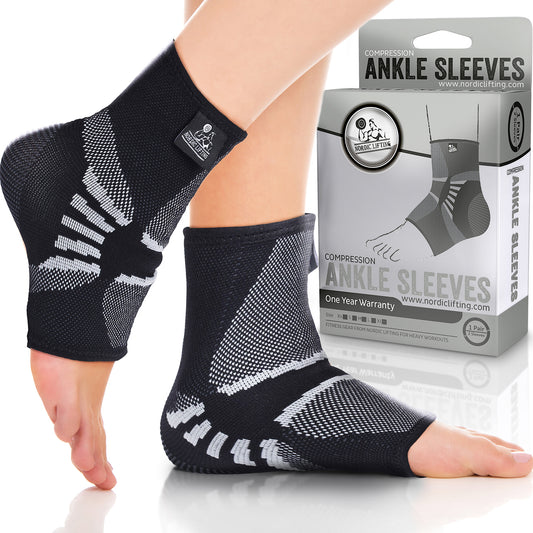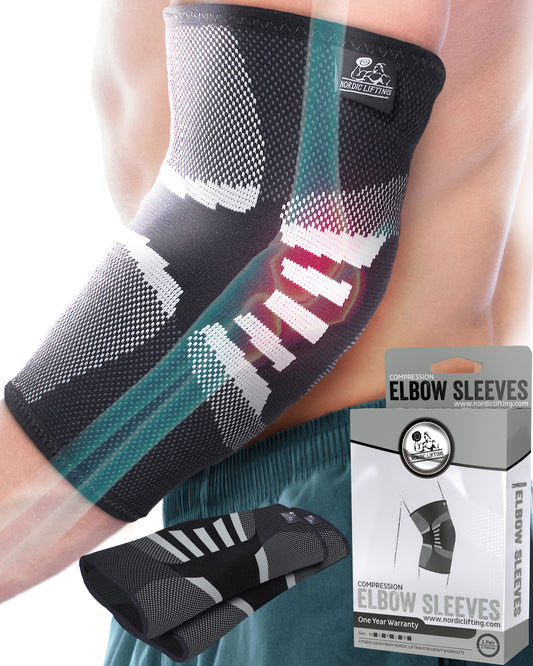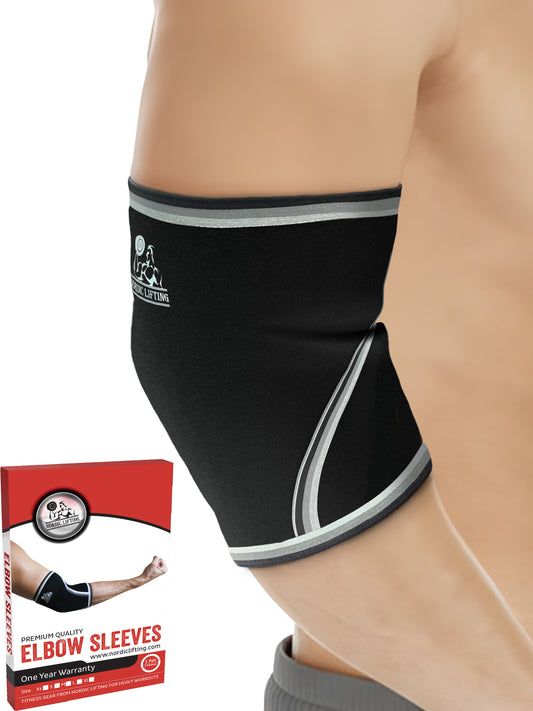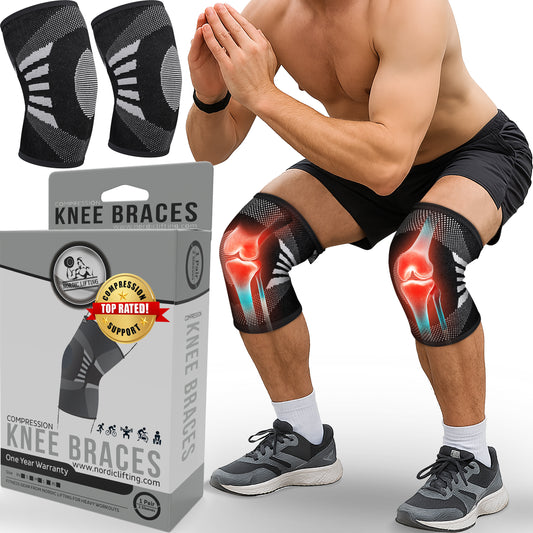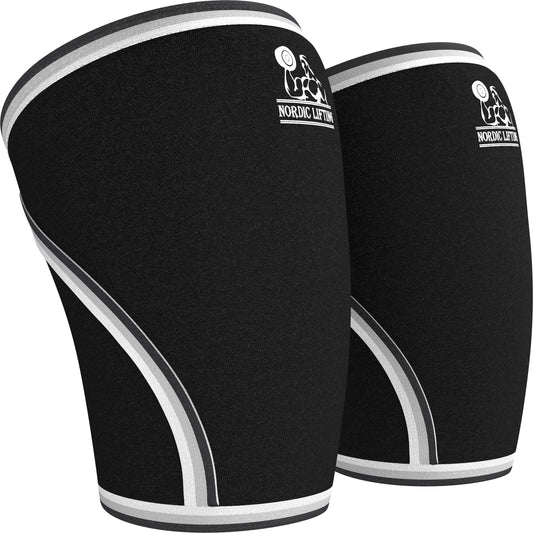Last Updated: April 22, 2025
Crisp fall air and colorful leaves make this season a great time to take workouts outside. Cooler temperatures can boost energy and make exercise feel easier. Outdoor fitness in the fall offers unique benefits and can help keep routines fresh and enjoyable throughout the season.
There are many ways to stay active, from hiking trails and biking to bodyweight workouts in the park. Some people enjoy small group runs or outdoor yoga, while others find peace in solo walks. Simple safety tips, like wearing reflective gear and staying hydrated, keep activities fun and comfortable as the days get shorter.
Key Takeaways
- Fall is ideal for refreshing outdoor exercise routines.
- Both solo and group activities help maintain motivation.
- Staying safe and planning ahead leads to better results.
Benefits Of Fall Outdoor Fitness
Regular outdoor activities in the fall can boost heart health, support mental wellness, and help people stay motivated to be active. Enjoying nature and cooler temperatures makes it easier to exercise regularly and see real benefits from physical activity.
Boosting Cardiovascular Fitness
Outdoor activities like hiking, biking, and brisk walking increase heart rate and strengthen the cardiovascular system. Many people find it more comfortable to move outdoors when the weather is cool. The crisp fall air can make it easier to take longer walks or bike rides, which leads to better endurance.
Biking through fallen leaves or hiking on trails helps work the major muscle groups in the legs and core. This type of physical activity burns calories and helps reduce the risk of heart disease. Studies show that people who stay active in cooler seasons maintain better heart health year-round. For more ways to improve heart health, see cardiovascular benefits of fall workouts.
A simple table for fall cardio activities:
| Activity | Benefit |
|---|---|
| Hiking | Boosts heart health |
| Cycling | Engages leg muscles |
| Brisk walking | Increases endurance |
Improved Mental Well-Being
Spending time outside in fall has clear mental health benefits. Natural sunlight helps the body make vitamin D, which supports mood. Even a short walk outside can lengthen attention span and improve memory.
Many people feel relaxed and refreshed after exercising outside. The bright leaves and cool weather can lift a person’s spirits and break up daily routines. Research shows that being outdoors may help lower stress and feelings of anxiety. Learn more about how outdoor physical activity supports cognitive function and mood.
Key mental benefits:
- Better mood
- Longer attention span
- Lower stress
Seasonal Motivation
The fall season can make it easier for people to stick with regular exercise. Cooler temperatures reduce the discomfort of sweating or overheating, so more people feel encouraged to get outside.
New sights like colorful leaves and fresh air can add variety and excitement to a workout routine. The changing season provides motivation to try new activities or visit new outdoor spots. Seasonal events, such as fun runs or group hikes, can also inspire people to get involved.
For those looking to invest in their health, fall is considered the perfect time to create good fitness habits, as outlined in outdoor fall fitness tips.
Tips for staying motivated:
- Dress in layers for comfort
- Invite friends or family to join
- Try a new trail or park
- Set small, reachable goals
Choosing The Right Fall Fitness Activities
Outdoor exercise in fall can be more comfortable because of cooler temperatures. Popular activities include walking, brisk walking, running, and jogging. These options increase aerobic exercise, support cardiovascular health, and use changing scenery to keep workouts interesting.
Walking And Brisk Walking
Walking is a low-impact aerobic exercise that helps improve heart health and boost mood. It is easy to start, requires no special equipment, and can be done anywhere, making it suitable for most fitness levels.
Brisk walking means moving faster than a normal stroll, raising the heart rate for more benefits. Walking in the fall lets people enjoy crisp air, colorful leaves, and less crowded trails. It is recommended to wear layers to stay warm and use comfortable, supportive shoes.
To get the most out of walking, set a steady pace and try to walk daily or several times a week. Adding hills or intervals can make the workout more challenging. For extra motivation, walk with a friend or listen to music or podcasts. For more tips on active fall workouts, check out these fall fitness tips and ideas.
Running And Jogging
Running and jogging offer a higher-intensity aerobic exercise that strengthens the heart and lungs. Runners burn more calories than walkers, and these workouts also help build muscle and bone strength.
The cooler fall weather can make running and jogging more comfortable. It is important to wear moisture-wicking clothes to stay dry and dress in layers as temperatures can change during the run. Pay attention to trail or path conditions, as wet leaves can be slippery.
Jogging at a slower pace is suited for beginners or those easing back into fitness. Running at a faster pace is good for people who want to increase intensity. Both activities can be done on roads, trails, or tracks. See more suggestions for fall fitness activities that keep workouts fresh and fun.
Group And Solo Outdoor Workouts
Many outdoor activities in fall can be done alone or with friends. Activities like hiking, cycling, and swimming offer fresh air, exercise, and a chance to enjoy the changing seasons.
Hiking And Exploring Trails
Hiking is popular in fall because cooler weather makes it more comfortable and less tiring. Colorful leaves and peaceful trails make hikes more enjoyable and help people relax.
For solo hikers, it is important to pick a safe, well-marked trail. They should tell someone their route and carry a map or GPS. Hiking with a group can be motivating and safer, especially in unfamiliar areas. Wearing layers and sturdy shoes helps with changing weather and uneven ground. Bringing water and snacks is also smart.
Trails often have different difficulty levels, so beginners should start with shorter, easier paths. Trail running is another good choice for those who want a faster pace or a more intense workout. More ideas for fall trail activities can be found in this list of fun fall workouts.
Cycling And Biking Adventures
Biking is a great way to see new places and cover long distances quickly. Cool fall days are ideal for both solo riders and group outings.
Solo cyclists should check their bike before heading out. This means testing the brakes, tires, and lights. Wearing a helmet is a must. Group cycling adds a social element and can help riders push each other. It is important to pick routes with less traffic whenever possible.
Using a reflective vest or bike lights helps with safety during shorter fall days. Cyclists should also bring a basic repair kit and some water. Biking and other outdoor workouts can help people stay active as the seasons change.
Outdoor Swimming Tips
Outdoor swimming is still possible in early fall, especially in local lakes, outdoor pools, or even cold-water spots for the brave. Swimmers should always check the water temperature before entering. Cold water can lower body heat quickly, so it is important to wear a wetsuit when needed.
Swimming with others is safer, especially outside of supervised pools. Swimmers should avoid venturing far from shore and look for clean and safe swim areas. Quick warm-up exercises and a towel or blanket for after the swim help keep the body warm.
Even short swims offer a good way to improve fitness and enjoy nature. Local outdoor pools and safe swimming zones can provide options for regular training outdoors. Swimmers looking for more variety can explore different bodies of water for a fresh experience each time. For more ideas on mixing up outdoor activities, visit this page about different types of outdoor workouts.
Staying Safe And Comfortable During Fall Exercise
To exercise outdoors in the fall, people need to dress for changing weather, guard against the risks of cold, and manage fluid intake even on cooler days. These steps help lower the chance of injury and discomfort.
Weather-Appropriate Gear
Layering is the key for outdoor fall workouts. Start with a moisture-wicking base layer to move sweat away from the skin. Add a fleece or wool mid-layer for warmth. Use a light, water-resistant outer layer to block wind and rain.
Hands and feet can get cold fast. Wear gloves, thick socks, and a hat or headband. Visibility is just as important as warmth; shorter days and cloudy skies mean it’s easier for drivers to miss seeing runners and bikers. Bright colors and reflective gear help a lot, especially in early mornings or late afternoons. For more ideas, review these fall safety tips for outdoor workouts.
Preventing Frostbite And Hypothermia
Frostbite and hypothermia can develop in chilly weather, especially if clothing is wet. Recognize frostbite by numbness, tingling, or skin that turns pale or white, especially on fingers, toes, nose, and ears. Hypothermia symptoms include shivering, confusion, and stumbling.
To avoid both, stay dry and covered. Change out of wet clothes right after a workout. Choose shoes with good grip to prevent slips that lead to longer exposure. If skin feels numb or the body shivers hard, go indoors immediately and warm up with dry clothes or blankets. Bringing a phone for emergencies is a good safety step. The CDC and outdoor experts stress that these actions help prevent serious health issues in the fall and winter months.
Hydration Strategies For Cooler Weather
Even when it’s cool, it’s essential to stay hydrated. Cold air can still make people sweat and lose fluids, though they may not notice it as much. Drink water before, during, and after being outside, just as one would in the summer.
Use a water bottle with a covered spout to keep liquids from getting too cold or freezing. Avoid drinking only when thirsty, as thirst can go down in cold weather. Fruits with high water content, like oranges or apples, can also help maintain hydration. Carry water if the workout will last more than 30 minutes outside. For more hydration tips in colder months, check out these fall fitness tips.
Maximizing Results With A Fall Fitness Plan
A strong fall fitness plan helps people stay motivated, make steady progress, and stay safe as the seasons change. By making careful choices and keeping track of activity, it's easier to reach workout goals.
Setting Realistic Goals
Setting realistic and specific goals is key for sticking with a fall fitness plan. Instead of vague aims like "get fit," it can help to choose goals such as “walk 30 minutes five days a week,” “run a 5K by November,” or “do 10 push-ups every morning.” When people set smaller, achievable goals, they feel a sense of progress and are less likely to give up if the weather changes.
Creating both short-term and long-term goals can keep motivation high throughout autumn. For example, a short-term goal might be to master a new trail or to increase the number of weekly workouts. Long-term goals could include finishing an outdoor race or maintaining regular physical activity even as daylight decreases. It helps to write down goals and review them each week.
Tracking Physical Activity
Tracking physical activity helps people notice patterns and improve their routines. Many use simple tools like a calendar, journal, or fitness app to record exercise dates, times, and types. Some track distance walked, steps taken, or calories burned. Tracking makes it clear what’s working and what needs adjusting.
People can also use checklists or tables for weekly progress, such as:
| Day | Activity | Time | Notes |
|---|---|---|---|
| Monday | Walk | 30 min | Cool weather |
| Wednesday | Bike | 40 min | New trail tried |
| Friday | Yoga outdoors | 25 min | Stretching focus |
This simple habit helps keep motivation high by showing consistency. Activity logs make it easier to see growth, spot missed days, and celebrate achievements over the fall season.
Maintaining Motivation Throughout The Season
It is common to feel less motivated when the weather gets cooler. Staying active outside in the fall depends on setting clear goals and using social support to make outdoor fitness fun and routine.
Supporting Consistent Exercise
Sticking to a schedule can help people stay on track through the fall. Setting specific goals, like walking three times a week or trying to improve endurance, provides direction and motivation.
Tracking progress in a journal or using a fitness app makes it easy to see results and stay encouraged. Adjusting your routine with the season is useful; for example, move outdoor activities to earlier in the day when there is more daylight and temperatures are mild.
Adding new equipment to a home gym, like resistance bands or a stationary bike, can help keep things fresh when outdoor conditions are not ideal. Creating a list of several outdoor activities—such as hiking, cycling, or yard games—offers options if the weather changes suddenly.
Being flexible and open to new activities gives people more ways to be active, even as routines change with the season. For more tips, check out these ideas to stay motivated as the weather changes.
Incorporating Social Outdoor Activities
Exercising with others can boost motivation and help build lasting habits. Organizing outdoor activities with friends or family, like group walks, bike rides, or even playing sports, makes fitness more enjoyable.
Committing to a regular schedule, such as a weekly hike or joining a local group class, keeps everyone accountable. Inviting others to join helps make workouts feel social and less like a chore.
Trying new group outdoor activities, such as joining a local running group or organizing a community park clean-up, can also increase engagement. People are more likely to stay active if they look forward to being with others while exercising.
If it gets dark early or weather becomes unpredictable, switching to active video games or indoor group fitness classes can keep the social aspect strong. For family ideas, taking time to walk or play a sport together supports both fitness and connection. Tips like these can help maintain fitness goals through the fall.
Transitioning To Winter Fitness
Colder months require changes to workout routines and safety habits. Dressing right and adjusting exercises can help people stay safe and active outside.
Adapting Routines As Temperatures Drop
Switching to winter fitness outside means being ready for colder, often unpredictable weather. People should wear moisture-wicking layers to stay dry and trap warmth. Lightweight, water-resistant outer layers can protect against wind and moisture. Hats and gloves help prevent heat loss from extremities.
Shorter daylight hours make it important to plan workouts earlier or wear reflective gear for visibility. Choosing safe, well-lit routes also makes early morning or evening exercise easier. Routines should account for slower warm-up times, as muscles take longer to get ready in the cold.
It helps to consider alternate activities, like hiking, brisk walking, or snowshoeing, if running or biking isn’t possible. Having a back-up indoor routine for days when the weather is unsafe can also reduce workout gaps during winter. For more clothing tips, dressing appropriately in layers is recommended.
Minimizing Injury Risks
Slippery sidewalks, uneven ground, and cold muscles can all raise the risk of injury. A longer, more active warmup is needed to prepare joints and muscles as colder temperatures make them stiff. Gentle dynamic movements like walking lunges or arm circles get blood flowing.
Wearing shoes with good traction helps prevent slipping on ice or wet leaves. If paths are icy, it’s smart to slow down, shorten steps, or try a different route. Checking for hazards, like uneven or hidden pavement, can also help avoid falls.
Hydration is still important, even when it's cold. Individuals may not feel as thirsty but can still become dehydrated. Regularly checking in with their body and listening for signs of overexertion or discomfort is key to decreasing injury risks. For more on safe outdoor winter exercise, these winter workout safety tips cover what to watch out for.
Frequently Asked Questions
Exercising outside in the fall requires planning, the right clothing, and awareness of safety. People often want to know how to stay warm, reduce risk, and keep up their motivation as the weather changes.
What are the best ways to stay warm while exercising outside in the fall?
Dress in layers. Start with a moisture-wicking base layer, add an insulating mid-layer, and finish with a windproof or water-resistant jacket.
Wear gloves, a hat, and warm socks to keep your extremities comfortable. Avoid clothes that trap sweat, as wet clothing can make you feel colder.
How can I adapt my workout routine for cooler weather conditions?
Warm up longer than usual to prepare your muscles, as cold temperatures can make you stiff. Try to work out during daylight hours when it is warmer.
Switch to shorter, more frequent sessions if you feel uncomfortable outside for long periods. Stay flexible and move workouts indoors if the weather gets too harsh.
Which types of outdoor exercises are most beneficial during the autumn season?
Walking, jogging, and hiking are popular because they allow people to enjoy cooler weather and fall scenery. Interval training, such as alternating bursts of running with walking, helps build endurance and keep workouts interesting.
Trail workouts are also great for building strength and balance, according to fitness experts.
What safety precautions should I take when working out outdoors as the days get shorter?
Wear bright or reflective clothing to stay visible to cars and cyclists as daylight fades. Avoid running or biking on unfamiliar trails when it's dark.
Carry a fully charged phone and let someone know your route. Watch for wet leaves or icy patches that can make paths slippery, as recommended in this seasonal safety guide.
How can I maintain my motivation to exercise outside as the temperature drops?
Set specific goals for your workouts, like trying a new route or reaching a step count. Invite a friend or join a group to keep workouts social.
Change up your activities to keep things interesting, and reward yourself for sticking to your routine during colder days.
What essential gear should I invest in for outdoor fitness activities in the fall?
Invest in moisture-wicking base layers, a quality outer jacket, and shoes with good grip for wet or muddy terrain.
Reflective gear and a good hat and gloves are important as temperatures drop and days get shorter. A lightweight headlamp can help with low-light workouts in early mornings or evenings, as shown in fall fitness tips.





